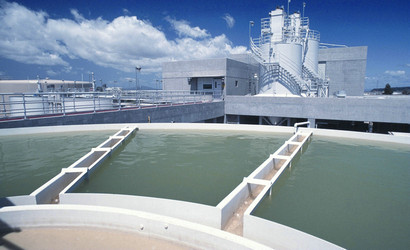
24 Feb waste water treatment
industrial waste water
Many kinds of pollutants will be produced in industrial production. The types and concentrations of pollutants produced in different industries are obviously different. [4]
Electroplating Wastewater
The main source of zinc in electroplating and metal processing wastewater is the towing solution of electroplating or pickling. The pollutants are transferred to the rinsing water by metal rinsing process. The pickling process involves first immersing metal (zinc or copper) in strong acid to remove surface oxides, and then immersing it in brightener containing strong chromic acid for brightening treatment.
The wastewater contains a large amount of hydrochloric acid, zinc, copper and other heavy metal ions and organic brighteners, which are highly toxic. Some of them also contain carcinogenic, teratogenic and mutagenic toxic substances, which do great harm to human beings. Therefore, the electroplating wastewater must be treated seriously to eliminate or reduce its pollution to the environment.
The treatment equipment of electroplating mixed wastewater consists of regulating pool, dosing box, reduction pool, neutralizing reaction pool, pH regulating pool, flocculation pool, inclined tube sedimentation pool, chamber filter press, clean water pool, air floatation reaction, activated carbon filter, etc.
Electroplating wastewater is treated by internal electrolysis of iron chips. This technology mainly uses activated industrial waste iron chips to purify wastewater. When wastewater contacts with fillers, electrochemical reactions, chemical reactions and physical actions occur, including catalysis, oxidation, reduction, replacement, co-precipitation, flocculation and adsorption. All kinds of metal ions in wastewater are removed and wastewater is obtained. Purify.
Heavy metal wastewater
Heavy metal wastewater mainly comes from wastewater discharged from mining, smelting, electrolysis, electroplating, pesticide, medicine, paint, pigments and other enterprises. If heavy metal wastewater is not treated, the environment will be seriously polluted. The types, contents and forms of heavy metals in wastewater treatment vary with different production enterprises. Heavy metal removal is very important in wastewater treatment.
Because heavy metals can not be decomposed and destroyed, they can only transfer their existing positions and change their physical and chemical forms to achieve the purpose of removing heavy metals. For example, in the process of wastewater treatment, after chemical precipitation treatment, heavy metals in wastewater change from dissolved ionic form to insoluble compounds and precipitate from water to sludge; after ion exchange treatment, heavy metal ions in wastewater transfer to ion exchange resin, and after regeneration transfer from ion exchange resin to regenerated wastewater.
Therefore, the principle of heavy metal removal in wastewater treatment is:
Principle 1: The most fundamental thing is to reform the production process. No or less toxic heavy metals are used.
In addition to the principle of heavy metals, the second is to adopt reasonable process, scientific management and operation, reduce the amount of heavy metals and the amount of wastewater loss, and minimize the amount of wastewater discharged. The treatment of heavy metal wastewater should be carried out in situ at the site of production and mixed with other wastewater in order to avoid complication of treatment. Moreover, it should not be discharged directly into urban sewers without removing heavy metals, so as to avoid expanding heavy metal pollution.
The methods of removing heavy metals in wastewater treatment can be generally divided into two categories:
The first method of removing heavy metals is to transform the dissolved heavy metals into insoluble metal compounds or elements, which can be removed from wastewater by precipitation and floatation. It can be applied to wastewater treatment methods such as neutralization precipitation, sulfide precipitation, floatation separation, electrolytic precipitation (or floatation) and diaphragm electrolysis.
The second method of removing heavy metals is to concentrate and separate heavy metals in wastewater without changing their chemical forms. The methods used include reverse osmosis, electrodialysis, evaporation and ion exchange. These wastewater treatment methods should be used individually or in combination according to the quality and quantity of wastewater.


